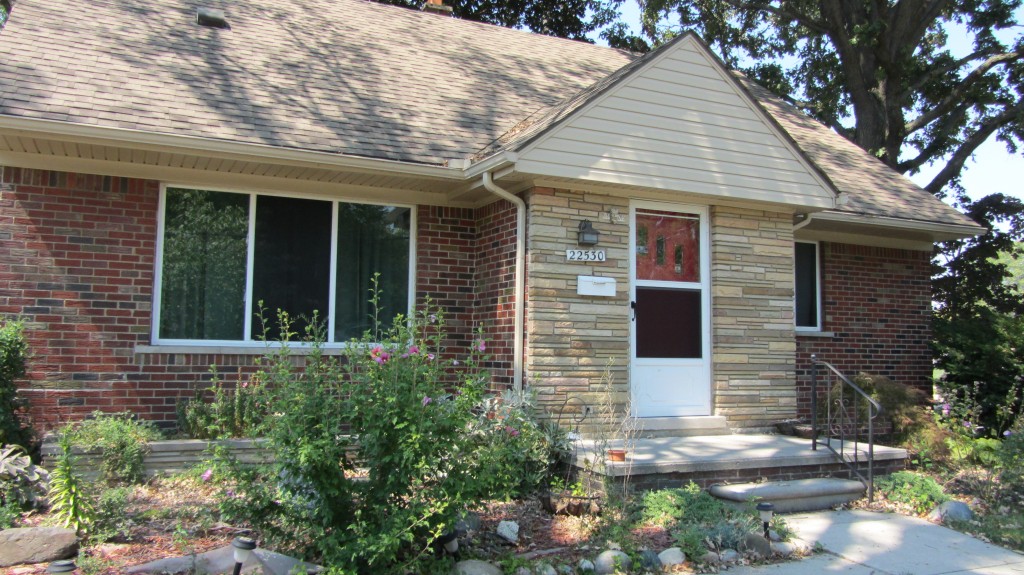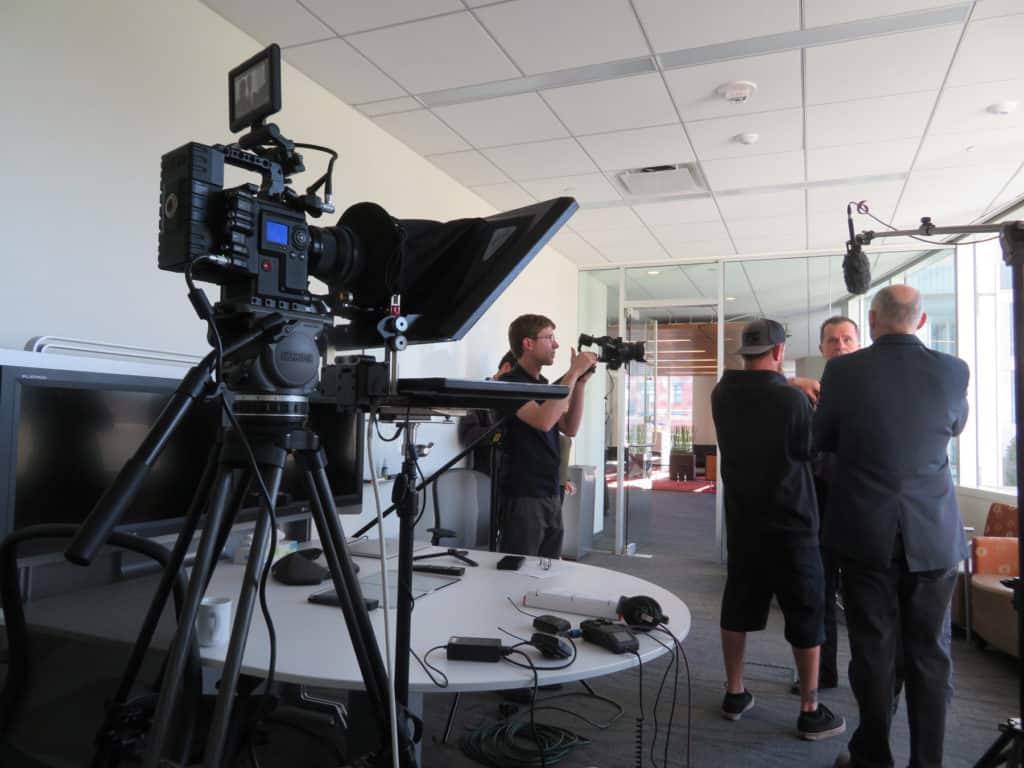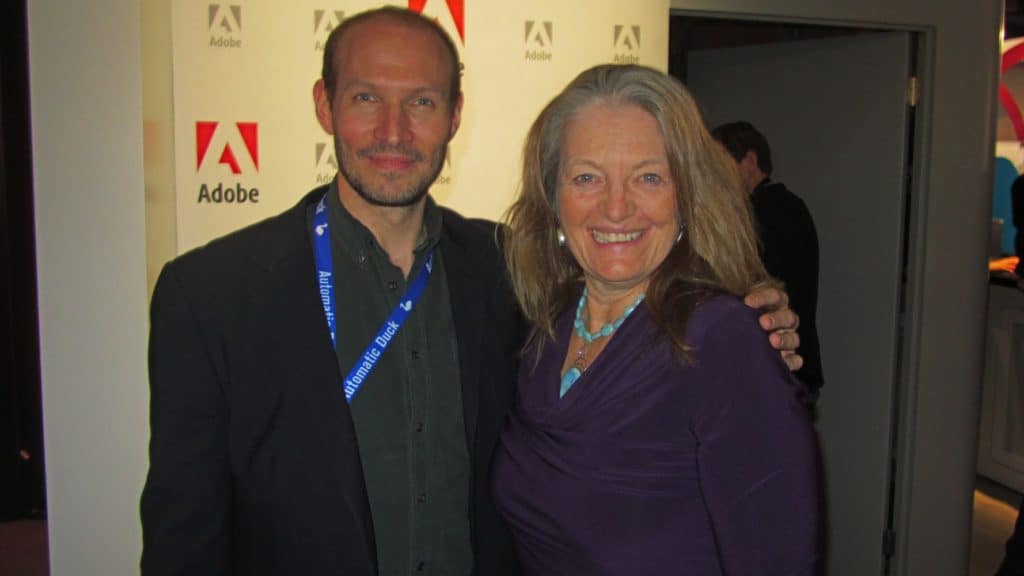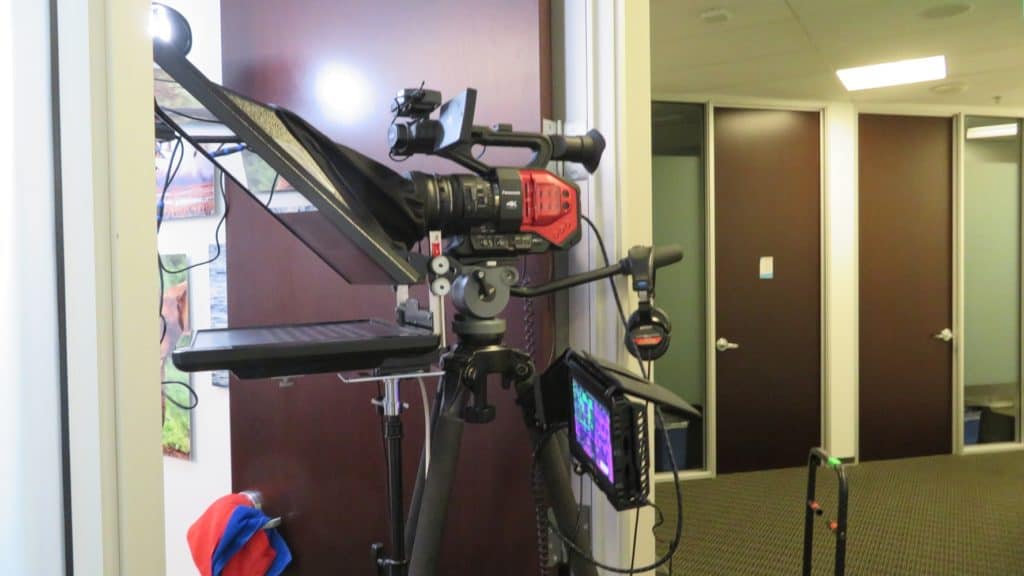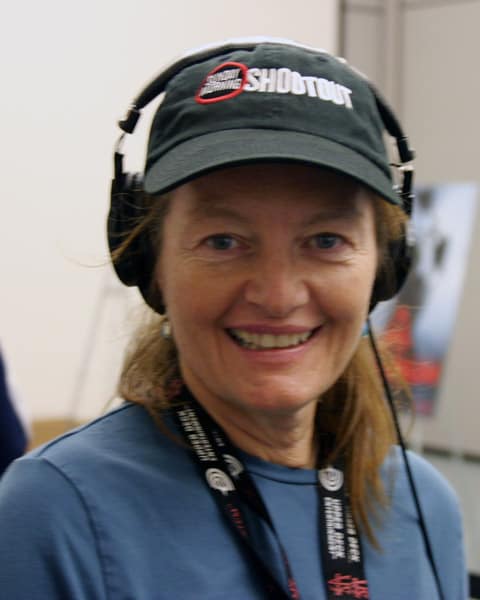How much does it cost to make a video?
We have fielded this question hundreds of times over 40 years in the business of video production.
Mark Schulze, our Director of Photography, gives this answer: How much does it cost to buy a house? Do you want a tent in your parents’ backyard? Or do you want a custom-built palace high atop a mountain? Do you want a ranch-style home in the suburbs?” Or one of those new-fangled “tiny houses?” I think you get the point. Video production is all about what your budget will allow.
Perhaps you have a “tiny house” budget and can only afford to do a free or very cheaply-made video. In that case, it may be best to wait until your budget is bigger, or not do it at all. If you can’t do it right, then hold off for a while. Because that poorly-made video is going to be a reflection on you. And it has the potential to do more harm than good.
Great News
Great news for businesses serious about creating a video in this New Century. The costs of video production equipment have dropped since the 1980’s. Back then, we paid $35,000 for a Betacam SP camera. The output by today’s standards wouldn’t even compare with the footage you can get from your iPhone. And that $35,000 didn’t even include the lens. But it’s a double-edged sword. Back in those days, the company willing to invest in broadcast-quality equipment was also the company that could get a good stream of work from hungry clients.
Should You Do It Yourself?
Today, many clients try to do it themselves. Would you do your own plumbing??? Or they hire the kid fresh out of film school (or maybe self-taught) with a DSLR and rickety tripod. Or maybe everything they do is hand-held because they can’t afford a decent set of “sticks.” In other words, the playing field is leveled. There is now a melting pot of talented, committed video production crews. They’re mixed in with the guys who have more chutzpah than talent. But could afford to buy the equipment. So ‘how much does a video cost?’ Knowing that you get what you pay for, here’s a list of what to consider when determining the cost of your video:
Experience in the Production Realm
As I mentioned before, you would not do your own plumbing (unless you’re a plumber). And if you weren’t a doctor, lawyer or auto mechanic, you wouldn’t perform surgery on yourself, defend yourself in court or repair your own car. If you try to produce your own video, you will quickly realize that without any experience at all, your video is going to reveal poor sound, lighting and videography. In effect, if you try to put it up at your website, you could potentially lose business.
You can pay as little as $25/hour for a recent film school graduate. Or around $1,500/day for a highly experienced video camera operator or DP (Director of Photography) with equipment. You may want a crew of two. That would include the camera operator and a location sound mixer who will monitor the levels of sound during interviews and speeches.
One Man Band
Many times the DP will go out as a “One Man Band,” especially if it’s just one or two interviews and the collection of B-Roll. A One Man Band does everything himself. He or she sets up and operates the camera, sets up lighting, attaches a lav to the interviewee, monitors sound, and basically produces the shoot.
Most of the top production companies charge between $50 and $150/hour for any additional crew members such as producers, directors and sound mixers. Make-up artists and Talent will also add to the budget. Consequently, you could figure $500 for each.
Pre-Production
What we do for many of our clients is something called “Pre-Production.” If it’s going to be a big shoot involving many people, there is a lot of coordination that must occur, potentially including Location Scouting, film permitting, talent acquisition, etc. Sometimes Pre-Production merely involves a series of educational sessions that we impart – via telephone conversations and email – to those clients who may not know all the ins and outs of video, or what to expect on location during a shoot.
This entails a bit of hand-holding and making sure the client feels comfortable in the abilities of the crew members on their shoot. Depending on how much time is spent with the client, Pre-Production costs are built into the larger budgets with many line items; but if it’s a simple shoot, we waive Pre-Production costs because it’s our way of creating a comfortable atmosphere for our client. If they are comfortable, then the chances are better that they will have fun on the shoot and return to work with us again.
Editing
The editing process is highly nuanced. Editing is where you create the style and substance of the video – you sequence all of the available assets into a cohesive story that communicates your key messages in a clear and engaging manner. Editors arguably should be the most highly paid (and skilled) in the entire process (quite often they are not.)
Costs: Editing costs run between $40/hour and $125/hour.
Actors/Presenters
Do you need to hire professional presenters, actors or models to improve the quality of your presentation? Not everyone is good on camera. You may need to make difficult decisions about who should represent your company. In a broadcast commercial quite often it is not someone in your company. Even in a corporate video you may decide that hiring outside talent is the best decision.
Costs: Presenters, models and actors can range anywhere from $50/hour to $200/hour or more depending on experience, demand and union costs.
Camera
The quality and flexibility of the camera you shoot with can make a huge difference in the finished quality and editing options for your video. Are you shooting on a $ 500 DV camera, a $2,500 SD camera, a $10,000 Full HD camera, a $40,000 RED or are you shooting on Film? The pace of technology advancement in film and video is breathtaking and the features and capabilities of cameras are changing weekly. Bottom Line: You should be able to see the difference in the final output quality in more expensive cameras. If you can’t, then it’s not worth paying for.
Costs: You will spend between $25/hour and $150/hour or more depending on which digital camera is used. Film cameras, lenses and stock will take you well over $1,000 /hour.
Equipment
The more experienced video production companies tend to have a wide variety of tools and equipment on hand for each shoot. Do you need a track dolly or a jib-arm to create a shot with movement? Have you got a high quality field monitor to know exactly what you are getting (or not getting) as you shoot? Do you have all the necessary audio equipment (lav’s, direction mics, booms etc) to capture the audio you need? Lighting and framing are everything in video. Have you got lights – lots of different lights to accommodate a wide variety of shooting scenarios? Do you have a variety of lenses to create the specific feel you are after – wide angle, fixed focal lenses for narrow depth of field etc?
Costs. Equipment cost can run anywhere from $25/hour to $100/hour or more depending on what specific equipment is required.
Crew
If you’ve ever watched a movie or television show being filmed you might wonder why you need so many people standing around idle on a set. Most business web video productions don’t require more than two people (and sometimes one is enough) but depending on the complexity of the shoot you may require a crew of three or more. If you are conducting man on the street interviews as an example, you need a cameraman, a sound man and a directer or interviewer. Concept videos like commercials will often require more people to help with the logistics of the shoot.
Costs: Expect to pay between $ 25 and $75/hour/person for experienced crew.
B-Roll / Cut-away shots
Most videos benefit from the addition of footage that supplements what is being said on screen. If you are interviewing a business owner who is talking about their new equipment you should cut away to shots of the equipment as they speak. Showing the viewer what is being described in the video is more informative (show me , don’t tell me) and also helps to keep the attention of the impatient viewer.
Costs: The length of time and equipment used to capture the b-roll will increase production costs. You can add anywhere from 10% to 50% of the total shooting costs if you need to supplement interview footage with b-roll.
Locations and production time
Where are you shooting? How long will each scene/interview/shot take? Are you shooting in one location or many? What are the specific requirements and constraints of each location? Are you indoors or outside? If you are shooting outside is weather a factor? If so what happens if it rains? How much set-up time is required? Are the locations close together? The most important factor is what is the total amount of time required for production. There are few economies of scale for time – but with good planning you can do a lot within a specific period of time.
Costs: This cost is arithmetic. Two days of shooting is twice as expensive as one day. {If shooting extends for many days or is regularly scheduled then most companies offer a discount}
Studio shooting
Do you require the use of a sound stage or studio? Do you need a controlled environment to shoot in? Are you shooting green screen and keying out the background in edit? The use of a studio has to be factored into the overall cost of the production one way or another. Larger companies may include studio time in their shooting costs and other companies include it as a line item as studio rental time.
Costs: Factor in between $100/hour and $ 400/hour depending on the size of the studio.
Set, props, equipment, extras
Aside from video production equipment are there other special props or pieces of equipment that need to be included as part of the costs. Do you need to rent a van, rent furniture, hire extras, hire a plane or helicopter for an aerial shot or bring in special equipment for the shoot. These all have to be factored in to the cost of the shoot.
Costs: Depends on what is required.
Stock footage
Do you require supplemental footage or images to support the video? There are many websites that sell high quality still and video footage. Some videos are comprised completely of stock footage, text and voice-over.
Costs: Stock images can be as cheap as $3 and great quality HD stock footage can cost as little as $50.
Narration
Do you need a voice-over to tell your story or to tie the video together? Video is a powerful medium. But it is even more powerful if you take full advantage of audio to support what is being shown on screen.
Costs: Voice-over costs have dropped dramatically over the last five years. Many voice artists work from home and can produce great work for almost any budget. $100 – $400 for a 2 minute video is reasonable depending on the experience and demand for the specific voice artist.
Audio files
Do you require a music bed, special sound effects or other audio to supplement your video?
Costs: Good quality music for video starts as low as $30 for a two or three minute track. Custom audio can cost $1,000 or more depending on the experience of the musician and what is required.
Teleprompter
A teleprompter can save a shoot. Even the most experienced speaker can be intimidated by lights and camera. It’s true that you can usually tell when someone is reading a teleprompter but that may still be preferable to the agony of a shoot spiraling out of control because the CEO can’t remember his lines.
Costs: Teleprompter and operator usually cost between $350 and $600 for a half day. And up to $1,000 for a full day.
Geographic Location
New York is more expensive to shoot in than Central Lake, Michigan because the cost of living is higher in New York. Half day rates don’t exist in some large cities today.
Costs: Expect to pay between 25% and %50 more if you are shooting in a large city.
Digitizing, transfers, rendering and uploading
Video takes on many forms during the production process. If you shot on film you have to transfer it to a format that works in your editing system. After you edit it, you have to render it to a presentation format (for web, for broadcast, etc.) and depending on where it’s going you may have to upload it somewhere (your web server / YouTube / The Academy Awards, etc). All this takes computer and human time and you generally have to pay for both.
Costs: Sometimes these costs are buried, sometimes they are line items. Tape transfers are still very expensive ($100’s of dollars). Rendering and uploading time are usually buried in the costs but can also be charged out at an hourly rate ($50 – $100 per hour).
Length of the Video
The longer the video the more it is likely to cost. Web videos tend to be around a couple of minutes although this varies considerably depending on the type and purpose of your video. Filming an articulate talking head (limited editing) for 10 minutes is much cheaper than creating a 30 second commercial. So…
Costs: All things being equal (they never are) consider longer to be more expensive, but it’s not arithmetic. An extra minute of video might only cost you %10 more if you have planned the extra requirements into the overall workflow.
Licensing/Union Fees
Are you using any media assets or talent that could be subject to ongoing licensing, usage or union fees? The web continues to drive all costs down including licensing fees – but they still exist. The best talent is usually a member of SAG, ACTRA or some other union.
Costs: Varies depending on the project and talent.
Direct or Third party
Will you deal directly with the video production company? Or will you work through an agency or other middleman?
Costs: You should expect that you are paying at least a %30 mark-up if you are going through a third party.
Interactivity
Will you produce a linear video? Or will you build in interactivity? Is there a direct call-to-action that you want to get the viewer to follow? Do you require flash programming do build the video into a special player that will sit on a specific landing page? The future of video is interactive video.
Costs: Expect to pay between %10 and %30 more to develop interactivity and flash support elements into your video.
Hosting
Your video is going to live on the web. Who will host it? You might end up hosting it on different servers (your own, YouTube, a business portal, etc.) depending on your business needs.
Costs: Hosting is either free or relatively inexpensive ($ 5 – $10 / month/video depending on bandwidth usage.)
Formats
How many different formats does your video have to be rendered in? Where is it going to be seen? Do you need a short version (editing down) and a long version? Does it sit in a multiplayer or is it in three different players? Should you break it up into pieces to make the length of it a little less evident and also to allow the user a bit more control?
Costs: Adapting multiple formats for a video could add %5 to %10 percent to the cost of the job depending on how much editing is required.
Language and translation
Do you need close captions? What about language versioning? Do you need onscreen text to change per language? Do you need to dub in different narration for different markets?
Costs: Language versioning can add %10 to %20 to the overall cost of the job. (Editing and proofing of different languages is usually much more time intensive than one language aone.)
Miscellaneous fees
Ya, everyone hates lawyers ‘disbursement fees’. Video production has the equivalent in ‘Miscellaneous fees’: Travel costs, meals, mileage, hotels, transportation, out-of-pocket… it all adds up.
Costs: Usually in the $100’s and sometimes in the $1,000’s of dollars on larger shoots.
Bottom Line?
Now you have some reasonable ballpark figures to work with while creating your budget. A two- to three-minute web-based corporate video presentation might cost between $2500 and $7500. It depends on the variables mentioned above. Use the time-honored “$1,000 a minute” for a professionally produced online corporate video as a starting point. Consequently, that will give you a reasonable idea of where to begin in the budgeting process.
Budgeting Tip
The best way to get a quick estimate is to have a reference video to compare to. (I.e. “How much would something like ‘this’ cost.”)
Did I miss anything?
The Video Production Industry
_____________________________________________________________________________________________________

